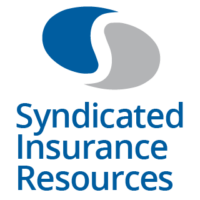Stand Out From Your Competitors: Pass the Grunt Test
Your inbox probably looks like mine. It is jam-packed with requests from vendors, carriers, prospects, customers, and even competitors.
Trying to respond to all the emails in a timely fashion is overwhelming. Sometimes you’d like to ‘select all’ and hit ‘delete.’
Since doing so would quickly dry up your pipeline, you’re tempted to rapidly reply with short responses, or only reply to top priorities. (I know. I am, too.)
Today’s digital economy has raised the bar. Customers are online in a fast-paced world. They seek convenience, speed, and value.
If you want to stay relevant, you know must offer your customers a best of breed that uses the phone, email and other forms of technology to provide rapid, but thoughtful interactions.
Are you communicating clearly and doing things to ensure you retain existing customers while finding new ones?
There many things you can do to stand out from your competitors. Here’s a few you’re sure to have success adding to your daily routine.
It all focuses on evaluating things through the eyes of a caveman and passing the grunt test. Read on to see how you do…
Three Ways to Pass the Grunt Test
Let’s look at your website, emails, client education, and quoting process. As you walk through these exercises, think about how your competitors would do, too.
Your Website
If a caveman looked at your website, would he be able to grunt what you offer, or would he be confused? (What about your competitors website?)
Donald Miller of StoryBrand suggests using the grunt test to review the copy on your website. In fact, he suggests that your site should answer three simple questions:
- What is your offer?
- How can you make their life better?
- What do they need to buy?
Before we go on to other ways to apply the grunt test, let’s pause for a moment.
Go look at your home page. Does your website answer those three questions? Does it pass the grunt test? If you answered no, you better stop reading now, so you can get your website fixed immediately.
Next, Let’s Look at Your Email Responses.
If someone read what you wrote in a quick response would they feel like you were just brushing them off? Or would they think that you genuinely cared to offer them the best customer service ever?
Like you, I receive email responses all the time. And it is really easy to see who put thought into what they write versus the person (or machine) that rapidly responds to my reply. Or worse yet, the person who never responds to my request.
Did you know that 98.4 percent of consumers check their email at least once a day? And 77 percent prefer [well-thought out emails] over today’s plug and play marketing automation systems.
Okay, I added the well-thought-out part to that statistic. But think about it for a minute. If your customers prefer email, shouldn’t what you write in that email pass the grunt test?
It may take you a second more to write out a thoughtful response. But the payoff is huge if you retain or gain a new customer. Right? (I bet your competitors aren’t doing this.)
One trick is to keep a template handy of the basics you want to include in your email replies. Then all you have to do is copy, paste and edit it to fit the response that is needed.
Apply This Approach to Your Talk Track, too.
Whenever you interact with your clients and prospects, do you look for ways to educate them about the importance of insurance coverage?
Does what you say about the insurance products and services you offer pass the grunt test? Is what you say simple to understand and jargon free?
Find ways to showcase your knowledge and expertise in every form of communication you send out via email, share via the phone, or say in person.
Or do you talk to impress using lingo that only other agents and brokers would understand?
You can increase loyalty by consistently providing value when you connect with others. In fact, one study found that loyal customers by 25 percent more insurance and deliver 250 percent referrals more than disgruntled ones.
Your Quoting Process
The grunt test can also be applied to your insurance quoting process.
Are you using archaic processes from days gone by? Are you dialing the various carriers and using a mix of market technology tools?
How’s waiting by the phone for replies to your requests working for you?
You can move beyond the caveman approach by using one platform that gives you access to more than 150 markets and 40+ unique product offerings for FREE.
Learn more and sign up today!
Now that you’ve read this far, you’re equipped with the same knowledge and information I possess. You now know how to pass the grunt test and stand out from your competitors. You are armed with some quick and easy tips that can help you grow your business.
When is now a good time to get started?
